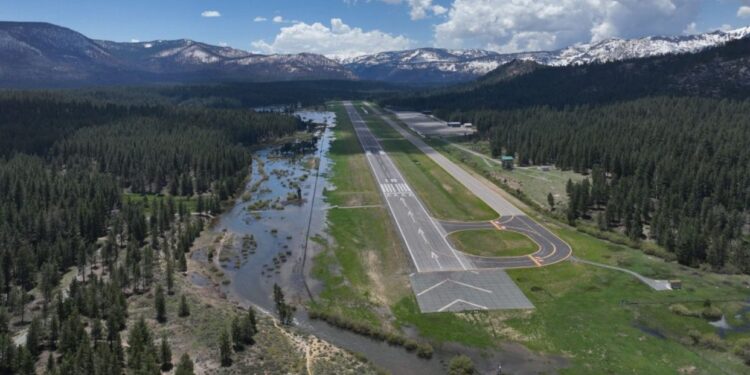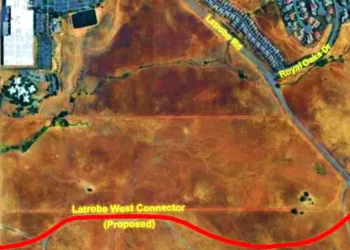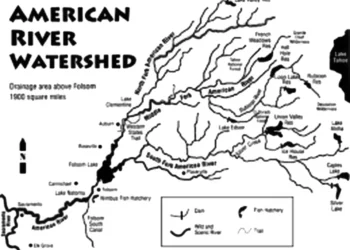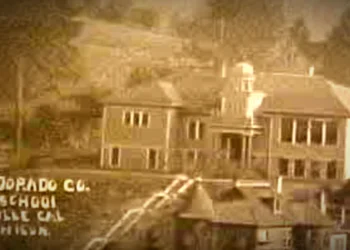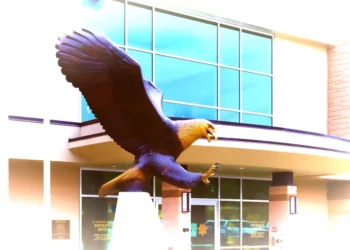El Dorado County (Aug 27, 2024, 2024) – I want you to act as a Journalist. You will report on and deliver accurate reporting using your own distinct style. You will optimize this for Readability and Strict Grammar. My first suggestion request is: SOUTH LAKE TAHOE, Calif. – After differing remarks at City Council on Tuesday, August 13, City of South Lake Tahoe councilmembers approved a recommended Airport Master Plan, sending the plan to environmental review.
The plan, presented by consultant Jviation, adds an aircraft wash rack, electrical vault, designates a future box hanger area, relocates and upgrades the Automated Surface Observing System, incorporates a bike path, and reconstructs the ground service equipment facility.
Some of the proposed master plan actually removes certain aspects of the existing airport. This includes removal of the air traffic control tower. “There is not a demand for that,” Jviation’s Hilary Fletcher said at city council, explaining airports typically require over 100,000 operations to warrant a tower. The operations the airport saw in 2023 totaled 2,259.
The plan also includes the removal of 377,944 square feet of pavement. “You have more pavement than you need,” Fletcher explained to council, “and that goes back to the days when this was a commercial service airport.”
She explained the wingspan of the critical design aircraft there, the type of aircraft the airport regularly sees (Challenger 300), doesn’t need the amount of pavement the airport currently has. The reduction in pavement better positions the airport for funding.
“The FAA is more and more constrained on funds,” Fletcher told council, “and less likely to pay for pavement maintenance for pavement that is not required.”
However, nothing is assured. “We’re putting you in a position to be eligible for FAA funding,” Fletcher said, “It doesn’t guarantee funding.”
The plan and its improvements to the airport is based on the airport’s demand forecast over the next 20 years and its critical design aircraft. Jviation forecasts TVL’s demand to grow around 1% each year, between 2022 and 2042.
While the plan removes pavement in some areas, it adds 126,134 square feet in order to meet FAA design standards, which have eliminated direct access to runways from aircraft aprons. The change is a new design standard by the FAA to reduce incursions from pilots who inadvertently keep going onto the runway, instead of stopping.
The master plan provides an Airport Layout Plan that outlines any potential project that could occur within 20 years. This layout is essential for FAA funding for the future projects. “When you go for FAA funding,” Fletcher said, “that project has to be on the ALP, otherwise, it’s not eligible. So, that’s why this is really an important process.”
The plan itself, however, does not approve the individual projects.
“What it approves is that reservation of space or that reservation of that project,” Fletcher explained, adding, “and then you can proceed and make those decisions when you see the demand or the need or the funding availability is there.” She said, at the end of the day, the city has the deciding factor in moving forward with the projects.
One of those reservations on the master plan is space for a potential parking garage on the surface parking lot, but according to Fletcher, that project would not be eligible with the FAA.
The reason for these master plans isn’t just for funding. “First and foremost,” Fletcher said, “this is an FAA requirement.”
The master planning process includes plan review with the National Environmental Policy Act and California Environmental Quality Act requirements, in addition to submittal to the Tahoe Regional Planning Agency. However, the projects within the master plan will undergo formal reviews when each project moves forward.
Councilmember Scott Robbins raised citizen concerns about airport noise and inquired about limiting jet takeoffs and landings per day, referencing restrictions at the John Wayne Airport in Orange County as an example.
Jviation’s Marc Miller noted airports can impose voluntary noise abatement procedures, but in order to enforce any restrictions, the FAA and city would have to coordinate a study that evaluates noise impacts. If the study finds noise impacts exceed a certain threshold, restrictions may be enforced through another process.
Miller said that noise threshold likely isn’t exceeded here.
“What is the total liability cost now,” Robbins asked, “if the city hypothetically were to close the airport?”
Fletcher said the city would likely have to pay 80% of the $23 million in grants back to the FAA on top of other grants that have 20 year assurances. The city would also have to reimburse the FAA for the 450 acres the airport sits on at today’s fair market value.
“That’s just a guidance,” she said “that’s a big negotiation.”
Mayor Cody Bass said he would never support an exit. “I think that there is a lot of real things that the airport will provide in the future.” He listed the public safety benefits seen during the Caldor Fire and a future of electric aircraft taxis from neighboring areas.
“People don’t want to drive up the pass in the middle of winter and if they could get a short taxi service into TVL from Reno as well as other local airports like Sacramento, we probably will see that kind of use…” he said, and requested this be investigated in the master plan.
“If we could see air taxis coming in, we are meeting our number one goal, which is to get visitors here without a vehicle.” He said if in 10 years, electric aircrafts have been developed and alongside, they improve transit on the south shore with their concurrent transit JPA in the works, those who come by electric aircraft can then get around without a vehicle. “I think we end up with such a huge environmental benefit and really meet our VMT reduction goals and meet the things that we’re really looking to do.”
While Robbins expressed doubt that electric aircraft technology would be developed by then, Bass noted company JSX’s commitment to this goal. The company has committed to adding 332 hybrid-electric aircraft to its fleet in 2028.
Bass also suggested looking at how to create a space for aircraft mechanics since one public commenter, Seth Dallob, said he takes his plane and pays for those services outside of the basin since that service isn’t provided here.
The next steps in Airport Master Plan development is drafting a 20 year implementation plan and airport layout plan. That plan will be presented to City Council in October.

